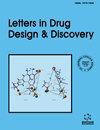Mechanisms Underlying the Therapeutic Effects of Banzhilian- Baihuasheshecao for Treating Pancreatic Ductal Adenocarcinoma Based on Bioinformatics Strategy
IF 1.6
4区 医学
Q4 CHEMISTRY, MEDICINAL
引用次数: 0
Abstract
Introduction:: Pancreatic ductal adenocarcinoma (PDAC) is one of the leading causes of cancer-related deaths. Banzhilian (BZL) and Baihuasheshecao (BHSSC) are classical Chinese herbs used in tumor therapy. However, the underlying mechanisms of BZL-BHSSC in treating PDAC have not been identified. Combining network pharmacology with single-cell RNA sequencing (scRNAseq), this study systematically explored the potential mechanisms of BZL-BHSSC in the treatment of PDAC. Methods:: The bioactive ingredients of BZL-BHSSC were screened from the Traditional Chinese Medicine Systems Pharmacology Database and Analysis Platform (TCMSP) database, while the PDAC-related datasets were obtained from the Gene Expression Omnibus (GEO) database. Based on the dataset GSE62452, we adopted differential expression analysis and weighted gene co-expression network analysis (WGCNA) to screen the signature genes of PDAC. To reveal the cell types of the pharmacological targets of BZL-BHSSC against PDAC, we performed scRNA-seq analysis and principal component analysis (PCA) on the dataset GSE111672. Molecular docking and immunohistochemical staining were used to validate our initial results. Results:: We obtained 29 bioactive ingredients from BZL-BHSSC and screened 210 signature genes of PDAC. Using network pharmacology, we identified 7 key therapeutic targets CDK1, MYC, CCNB1, TOP2A, CLDN4, NUF2, and MET, revealing that baicalein, quercetin, and luteolin are core components for the efficacy of BZL-BHSSC. The main signaling pathways involved in therapy were the PI3K-AKT signaling pathway and the p53 signaling pathway. The molecular docking results verified the strong binding activity (binding energy > -7 kJ/mol) between active ingredients and targets. The scRNA-seq results informed that cells from 3 PDAC samples could aggregate into 19 clusters and 3 cell types. The target genes were almost concentrated on the immune cells. Immunoinfiltration analysis suggested that the expression of Macrophages M0 and Dendritic cells activated was significantly upregulated in the PDAC group (p<0.001), while the opposite was true for B cells naïve and T cells CD8 expression (p<0.05). Conclusion:: We concluded that BZL-BHSSC can improve the overall survival prognosis of PDAC patients by interfering with the signature genes of PDAC through direct and indirect pathways and improving immunity. Our study provides a basis for subsequent studies. other: No基于生物信息学策略的板脂连-白化血痰草治疗胰腺导管腺癌的作用机制研究
胰腺导管腺癌(PDAC)是癌症相关死亡的主要原因之一。板芝连和白花舍草是治疗肿瘤的中草药。然而,BZL-BHSSC治疗PDAC的潜在机制尚未确定。本研究将网络药理学与单细胞RNA测序(scRNAseq)相结合,系统探索BZL-BHSSC治疗PDAC的潜在机制。方法:从中药系统药理学数据库和分析平台(TCMSP)数据库中筛选BZL-BHSSC的生物活性成分,从Gene Expression Omnibus (GEO)数据库中筛选pdac相关数据集。基于数据集GSE62452,我们采用差异表达分析和加权基因共表达网络分析(WGCNA)筛选PDAC的特征基因。为了揭示BZL-BHSSC抗PDAC药理学靶点的细胞类型,我们对数据集GSE111672进行了scRNA-seq分析和主成分分析(PCA)。分子对接和免疫组织化学染色用于验证我们的初步结果。结果:从BZL-BHSSC中获得29种活性成分,筛选出210个PDAC特征基因。利用网络药理学,我们确定了7个关键治疗靶点CDK1、MYC、CCNB1、TOP2A、CLDN4、NUF2和MET,揭示了黄芩素、槲皮素和木草素是BZL-BHSSC有效的核心成分。参与治疗的主要信号通路为PI3K-AKT信号通路和p53信号通路。分子对接结果验证了其较强的结合活性(结合能>- 7kj /mol)。scRNA-seq结果表明,来自3个PDAC样本的细胞可以聚集成19个簇和3种细胞类型。靶基因几乎集中在免疫细胞上。免疫浸润分析显示,PDAC组活化的巨噬细胞M0和树突状细胞表达显著上调(p<0.001),而B细胞naïve和T细胞CD8表达则相反(p<0.05)。结论:BZL-BHSSC可通过直接和间接途径干扰PDAC的特征基因,提高机体免疫力,改善PDAC患者的总体生存预后。本研究为后续研究提供了基础。其他:不
本文章由计算机程序翻译,如有差异,请以英文原文为准。
求助全文
约1分钟内获得全文
求助全文
来源期刊
CiteScore
1.80
自引率
10.00%
发文量
245
审稿时长
3 months
期刊介绍:
Aims & Scope
Letters in Drug Design & Discovery publishes letters, mini-reviews, highlights and guest edited thematic issues in all areas of rational drug design and discovery including medicinal chemistry, in-silico drug design, combinatorial chemistry, high-throughput screening, drug targets, and structure-activity relationships. The emphasis is on publishing quality papers very rapidly by taking full advantage of latest Internet technology for both submission and review of manuscripts. The online journal is an essential reading to all pharmaceutical scientists involved in research in drug design and discovery.

 求助内容:
求助内容: 应助结果提醒方式:
应助结果提醒方式:


